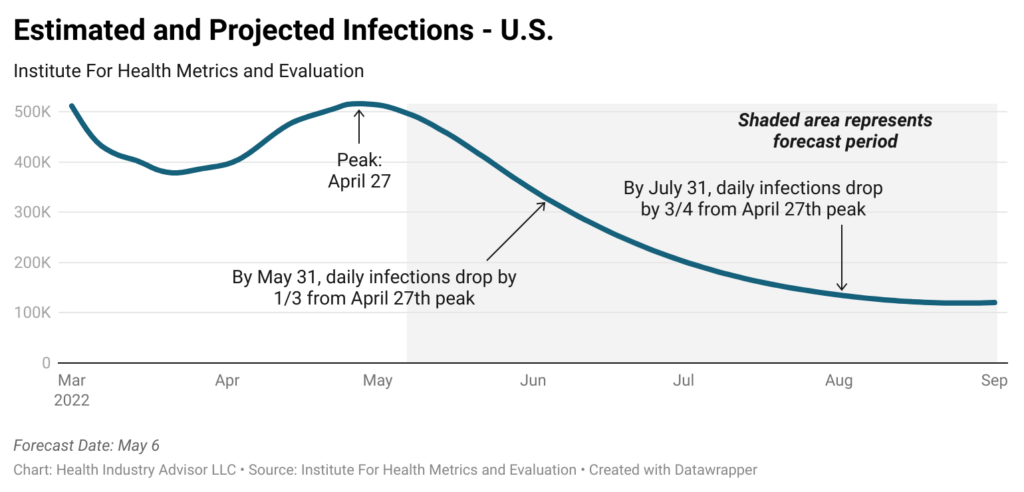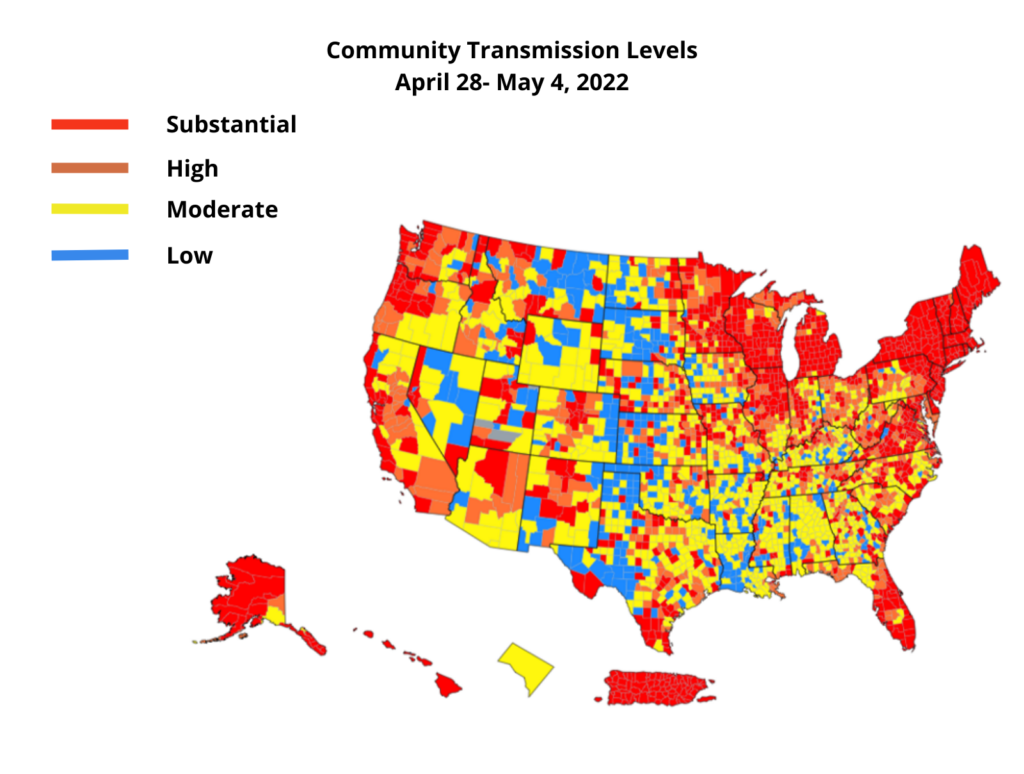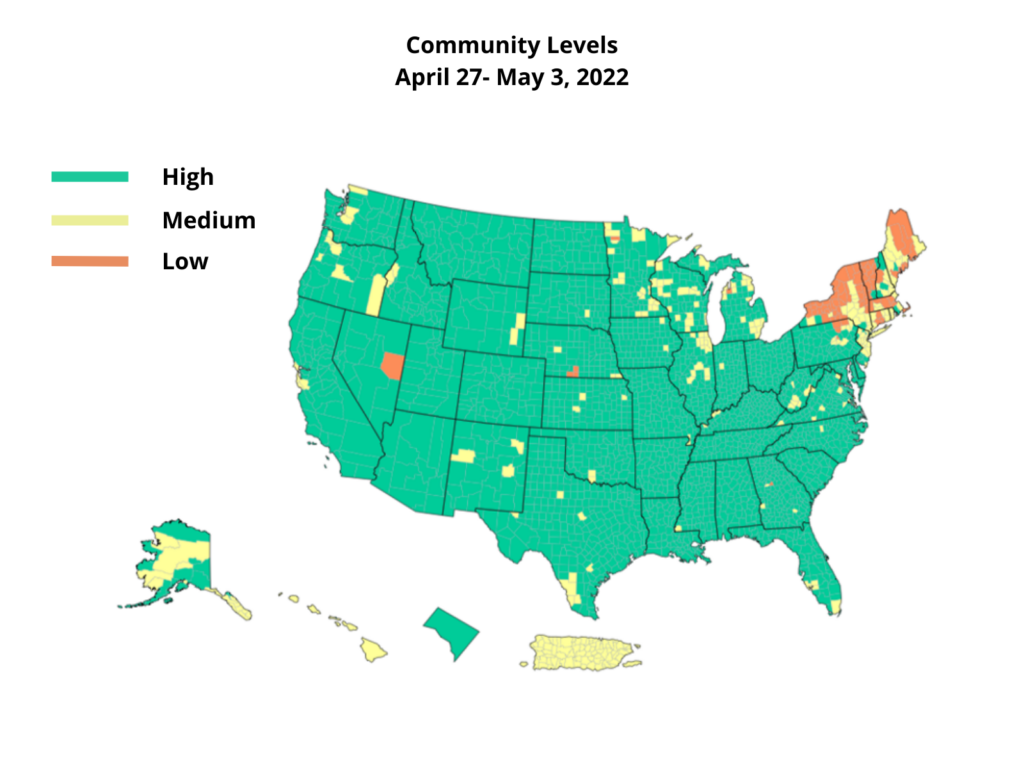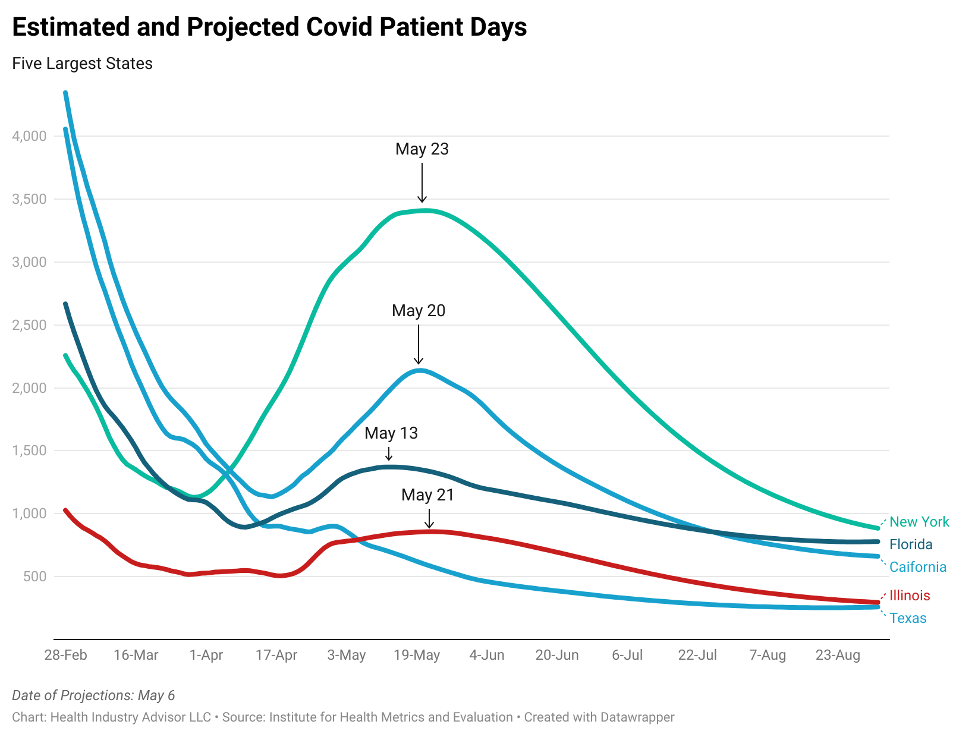By Mark Van Sumeren
May 9, 2022 – Covid infected fewer people worldwide last week than a week earlier. However, we cannot make the same claim in the United States. Indeed, the Omicron wave persists here, with reported cases rising 14% over the prior week. Even the first-hit northeastern states continue to observe rising cases and hospitalizations.
However, the Omicron-driven case wave may crest soon, and hospitalizations may fall, based on the most recent modeling from the oft-cited Institute for Health Metrics and Evaluation (IHME).

In IHME’s model, estimated infections peaked in the United States late last month (despite continued rising reported cases). By the end of this month, daily infections could be one-third lower than at the end of April; by the end of July, they could fall to a mere quarter of the late-April level.
A similar pattern emerges when viewing the anticipated situation in the five largest states. California’s estimated infections started falling nearly a month ago; New York’s last week; and Illinois and Florida’s this week. In this IHME model, Texas never witnessed this spring infection surge.

Despite the IHME’s optimism, surveillance shows the virus spread is still increasing. The test-positive rate exceeded 7% last week, the highest rate posted since February. This rate had fallen to 2.2% as recently as late March. Further, last week, one in five wastewater measurement sites recorded relatively high virus levels (60% or more of peak). Half of all monitored sites measured virus levels at least 40% of earlier peaks.
Further, the Centers for Disease Control and Prevention (CDC) reports that more than half of all communities rate as “High” or “Substantial” for virus transmission. Only 13% rated as “Low.”

However, the CDC balances the concern about widespread transmission with encouragement that the healthcare impact of this spread has remained in check. The CDC’s Community Level model rates nine-in-ten communities as “Low” concern, considering both virus spread and health care impact. Only 2.5% rate “High” concern by the CDC.
In effect, these CDC data reinforce the low severity of this variant, the effectiveness of antibodies in limiting this severity, and our strengthened treatment protocols.

Gratefully, these rising cases have yet to stress the health care system. Further, deaths have remained low and even declined despite the rise in cases. Covid admissions increased by two-thirds in the past month, and patient days increased by one-third. (Reported cases more than doubled in the same timeframe.) Deaths dropped by half – although these tend to trail rising cases by several weeks.
Late last week, Covid patients occupied one of every twenty-four inpatient beds in the United States – about one patient for every nursing unit. While worse than the one of every thirty-two beds used by Covid patients in mid-April, this represents stark relief from one of every two-and-a-half beds required in early February.
IHME forecasts admissions will begin falling nationwide in less than ten days. Patient days will follow this decline a few days later. Within two weeks, projected admissions and patient days fall 10% and by the end of July, to merely a third of today’s levels.

Hospitals in the five largest states should gain similar relief. IHME anticipates that Covid patient days will peak in California, Florida, Illinois, New York, and Texas within the next two weeks.

So, while reported cases continue rising in the United States, few public health officials are ringing the alarms. Infections have not stressed the healthcare system, prior infections or vaccinations limit severity, and therapeutics improve the prognosis for most who become infected and suffer severe symptoms. The current Omicron infection wave may be reaching its final chapter, at least in the United States.
